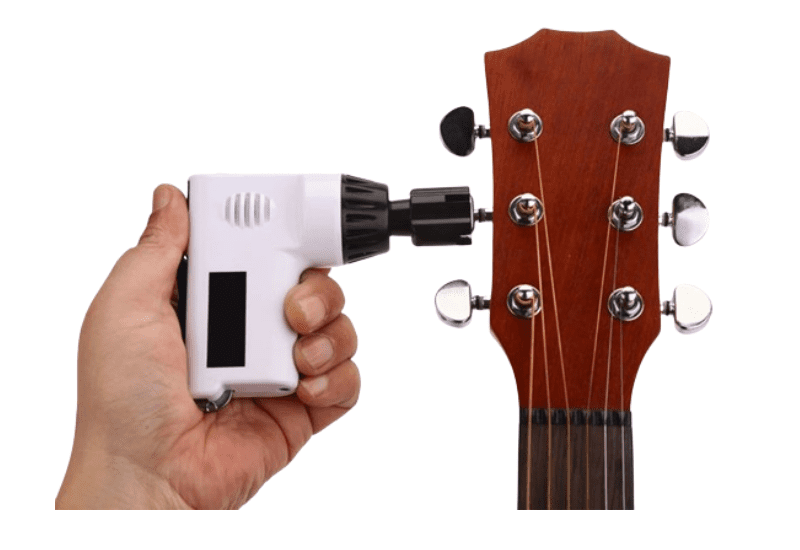Maintaining Your Electric Ukulele

Introduction
Maintaining your electric ukulele is vital for preserving its sound and extending its lifespan. Regular care can help you avoid costly repairs and ensure your instrument performs at its best. In this guide, we will delve into the specifics of electric ukulele maintenance, providing you with valuable tips and insights.
What Is an Electric Ukulele?
Definition and Features
An electric ukulele is a modern version of the traditional ukulele, equipped with electronic components that allow it to be amplified. These components typically include pickups, wiring, pots, and switches. This setup allows the ukulele to connect to an amplifier, offering a broader range of sound customization.
Key Features of an Electric Ukulele:
- Pickups: Convert string vibrations into electrical signals.
- Wiring: Connects the electronic components.
- Pots: Control volume and tone.
- Switches: Allow pickup selection and other functions.
Differences Between Electric and Acoustic Ukuleles
Electric ukuleles differ significantly from their acoustic counterparts. While acoustic ukuleles rely on their hollow bodies to project sound, electric ukuleles use pickups to convert string vibrations into electrical signals. This allows for amplified sound and the use of effects pedals, giving musicians more versatility.
Major Differences:
- Sound Projection: Acoustic relies on body, electric relies on pickups.
- Sound Customization: Electric allows for effects and amplification.
- Components: Electric ukuleles have additional electronic parts.
Why Regular Maintenance Is Crucial
Longevity and Performance Benefits
Regular maintenance ensures your electric ukulele remains in prime condition, offering consistent performance. Well-maintained ukuleles are less likely to suffer from issues that can affect sound quality and playability. By routinely inspecting and cleaning your instrument, you can avoid many common problems.
Benefits of Regular Maintenance:
- Enhanced Sound Quality: Clean and well-adjusted components produce better sound.
- Extended Lifespan: Regular care prevents premature wear and tear.
- Consistent Performance: A well-maintained instrument performs reliably.
Avoiding Costly Repairs
Routine care helps identify and address minor issues before they become major problems. This proactive approach can save you from expensive repairs down the line. Simple tasks like cleaning the fretboard and checking the electronics can prevent significant damage and costly fixes.
How Maintenance Saves Money:
- Prevents Major Issues: Early detection of problems reduces the need for major repairs.
- Reduces Wear and Tear: Regular care minimizes damage and extends the life of components.
- Maintains Value: A well-maintained ukulele retains its value better.
Where To Buy Maintenance Tool Kit
You can purchase a Maintenance Tool Kit for your Electric Ukulele at a great price from the Amazon link below. There, you will be able to find important specification detail as well as customer reviews about the instrument.

Overview of Electric Ukulele Components
Body and Neck
The body and neck of your electric ukulele need regular cleaning to prevent damage and maintain appearance. Use a soft cloth and suitable cleaning products to remove dust and grime. Proper care of these components helps maintain the instrument’s aesthetic and structural integrity.
Cleaning Tips for Body and Neck:
- Use Mild Cleaners: Avoid harsh chemicals that can damage the finish.
- Soft Cloth: Use a microfiber cloth to prevent scratches.
- Regular Cleaning: Clean after each use to prevent buildup.
Electronics: Pickups, Wiring, Pots, and Switches
Understanding the electronics of your ukulele is essential for effective maintenance. Each component plays a critical role in sound production and should be regularly inspected. Keeping these parts in good condition ensures clear, reliable sound output.
Key Electronic Components:
- Pickups: Convert vibrations to electrical signals.
- Wiring: Connects electronic parts.
- Pots: Adjust volume and tone.
- Switches: Control pickup selection and other functions.
Hardware: Bridge, Tuning Pegs
The bridge and tuning pegs are vital for maintaining proper string tension and tuning stability. Regularly check these parts for wear and tear. Proper maintenance of these components ensures your ukulele stays in tune and plays well.
Maintenance Tips for Hardware:
- Inspect Regularly: Check for signs of wear or damage.
- Tighten Loose Parts: Ensure all screws and pegs are secure.
- Lubricate Moving Parts: Use appropriate lubricants to keep parts moving smoothly.
Essential Maintenance Tips for Your Electric Ukulele
Understanding the Electrical Components
Pickups
Types of Pickups (Single-Coil vs. Humbucker)
Single-coil pickups provide bright, crisp sounds, while humbuckers offer a warmer, fuller tone. Knowing the type of pickups on your ukulele helps in their maintenance and troubleshooting.
How Pickups Affect Sound Quality
Pickups greatly influence your ukulele’s sound. Ensure they are clean and properly adjusted to maintain optimal sound quality.
Common Pickup Issues
Dirty or improperly adjusted pickups can cause sound issues like buzzing or dead spots. Regular inspection and cleaning can prevent these problems.
Wiring
Wiring Schematics of Electric Ukuleles
Familiarize yourself with your ukulele’s wiring schematic. This knowledge is invaluable when troubleshooting electrical issues. You can find wiring schematics in the user manual or online resources.
Importance of Good Wiring for Sound Clarity
Good wiring ensures clear sound transmission from the pickups to the amplifier. Check for loose or damaged wires regularly.
Common Wiring Problems and Solutions
Common issues include loose connections and short circuits. Learn basic soldering techniques to fix these problems yourself.
Pots and Switches
Functions of Pots (Volume and Tone Controls)
Pots control the volume and tone of your ukulele. Keep them clean and free from dust to ensure smooth operation.
Types of Switches (Pickup Selector, On/Off Switches)
Switches allow you to select different pickups or turn the ukulele on and off. Regular cleaning and inspection prevent malfunction.
Common Issues with Pots and Switches
Dust and grime can cause pots and switches to become scratchy or unresponsive. Use appropriate cleaning solutions to maintain their functionality.
Cleaning Your Electric Ukulele
Cleaning the Body
Recommended Cleaning Products
Use a mild guitar polish and a soft cloth to clean the body of your ukulele. Avoid harsh chemicals that can damage the finish.
Techniques for Different Finishes (Glossy vs. Matte)
Glossy finishes can be cleaned with polish, while matte finishes require a gentler approach. Use a dry cloth to avoid streaks.
How to Avoid Damage During Cleaning
Never use abrasive materials on your ukulele. Always clean in a circular motion to avoid scratching the surface.
Cleaning the Neck
Cleaning the Fretboard (Rosewood, Maple, etc.)
Different fretboard materials require different cleaning methods. Use a suitable fretboard cleaner and a soft brush to remove dirt and oil.
Removing Dirt and Oil Accumulation
Regular cleaning prevents dirt and oil from building up on the fretboard, which can affect playability and cause damage over time.
Maintenance for Frets and Inlays
Polish the frets with a fretboard conditioner and clean the inlays to keep them looking their best.
Cleaning the Electronics
Safe Cleaning Methods for Pickups and Wiring
Use a can of compressed air to blow dust out of pickups and wiring. Avoid using liquids that can cause short circuits.
How to Avoid Short Circuiting
Ensure all electronic components are dry before plugging in your ukulele. Avoid excessive moisture during cleaning.
Recommended Tools and Products
Invest in a good set of cleaning tools, including a microfiber cloth, fretboard cleaner, and compressed air. These will help you maintain your ukulele effectively.
String Maintenance
Choosing the Right Strings
Different Materials and Their Impact on Sound
Strings come in various materials, such as nylon and fluorocarbon. Each material affects the sound and playability of your ukulele.
Recommended Brands and Gauges
Experiment with different brands and gauges to find the ones that best suit your playing style and sound preferences.
Changing Strings Properly
Step-by-Step Guide to String Replacement
- Loosen the old strings and remove them from the tuning pegs and bridge.
- Attach the new strings to the bridge and thread them through the tuning pegs.
- Wind the strings onto the pegs, ensuring they are tight and secure.
Tools Needed for String Change
You will need a string winder, wire cutters, and a tuner to change your strings effectively.
Proper String Stretching Techniques
Stretch the strings gently after installation to help them settle and stay in tune.
Tuning and Stretching New Strings
Tuning Methods (Electronic Tuners, Tuning by Ear)
Use an electronic tuner for accurate tuning or tune by ear for a more personal touch.
Techniques to Ensure Strings Stay in Tune
Stretch the strings and tune them repeatedly until they hold their pitch.
How to Prevent Strings from Slipping
Ensure the strings are properly wound around the tuning pegs and adequately stretched to prevent slipping.
Inspecting and Adjusting the Electronics
Checking the Pickups
Measuring Pickup Height
Use a ruler or a specialized tool to measure the height of your pickups.
Tools Required for Accurate Measurement
A simple ruler or a specialized pickup height gauge can help ensure accurate measurements.
Ideal Pickup Height for Different Playing Styles
Adjust the pickup height based on your playing style for optimal sound.
Adjusting Pickup Height
How to Adjust Pickup Height for Optimal Sound
Turn the adjustment screws on the pickups to raise or lower them.
Effects of Pickup Height on Tone and Volume
Higher pickups produce a louder sound, while lower pickups offer a more mellow tone.
Troubleshooting Pickup Issues
Identifying Common Pickup Problems (Buzzing, Dead Spots)
Check for loose screws or dirt buildup that can cause buzzing or dead spots.
How to Resolve Pickup Issues
Tighten any loose screws and clean the pickups regularly to prevent issues.
Wiring Inspection and Maintenance
Identifying Common Wiring Problems
Look for loose connections, broken wires, and signs of wear.
Loose Connections
Loose connections can cause intermittent sound issues. Check and secure all connections.
Short Circuits and Broken Wires
Inspect for short circuits and broken wires, which can disrupt the signal.
How to Fix Loose Connections
Use a soldering iron to reattach loose wires securely.
Tools and Techniques for Re-soldering
A soldering iron, solder, and a steady hand are required for re-soldering connections.
How to Test Connections After Repair
Use a multimeter to check for continuity and ensure all connections are secure.
Replacing Faulty Wires
Identifying Worn-Out Wires
Look for frayed or discolored wires that indicate wear.
Step-by-Step Guide to Replacing Wiring
- Remove the old wires carefully.
- Cut new wires to the appropriate length.
- Solder the new wires in place, ensuring solid connections.
Maintaining Pots and Switches
Cleaning Pots and Switches
Techniques for Cleaning Without Damaging Components
Use contact cleaner to clean pots and switches without damaging them.
Recommended Cleaning Solutions
Contact cleaner is ideal for cleaning electrical components.
Replacing Damaged Pots and Switches
How to Identify When Replacement Is Needed
If cleaning doesn’t resolve the issue, it’s time to replace the component.
Tools and Steps for Replacing Components
A soldering iron and replacement parts are necessary for this task.
Protecting Your Electric Ukulele
Using a Proper Case
Types of Ukulele Cases (Hard Cases vs. Soft Cases)
Hard cases offer better protection, while soft cases are lighter and more portable.
How to Choose the Right Case for Protection
Choose a case that fits your ukulele snugly and offers adequate padding.
Storing Your Ukulele Correctly
Ideal Storage Conditions (Temperature, Humidity)
Keep your ukulele in a stable environment with moderate temperature and humidity.
How to Prevent Warping and Cracking
Avoid extreme temperature changes and high humidity levels.
Avoiding Common Environmental Hazards
Protection from Extreme Temperatures
Never leave your ukulele in a car or near heat sources.
Avoiding Exposure to Moisture and Direct Sunlight
Moisture can damage electronics, and sunlight can fade the finish. Store your ukulele in a cool, dry place.
Professional Help: When to Seek It
Identifying Signs That Require Professional Attention
Unusual Sounds or Malfunctions
If you notice strange sounds or malfunctions, seek professional help.
Significant Physical Damage
Cracks, breaks, or severe wear should be handled by a professional technician.
Finding a Qualified Technician
How to Find Experienced Ukulele Technicians
Look for technicians with good reviews and experience with electric ukuleles.
Questions to Ask Before Hiring a Technician
Ask about their experience, turnaround time, and warranty on repairs.
Conclusion
Regular maintenance is crucial for keeping your electric ukulele in top condition. Clean the body and electronics, replace strings as needed, and inspect the wiring and pickups regularly.
Invest in quality cleaning products, a set of basic tools, and keep learning about your instrument to keep it in the best possible condition.
Maintaining your electric ukulele doesn’t have to be a chore. With the right knowledge and tools, you can keep your instrument sounding and looking fantastic for years to come. Happy playing!

